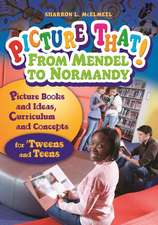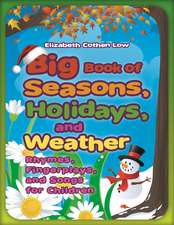Literacy Development in the Storytelling Classroom
Editat de Sherry Norfolk, Jane Stenson, Diane Williamsen Limba Engleză Paperback – 21 iun 2009 – vârsta până la 17 ani
Preț: 265.29 lei
Preț vechi: 380.51 lei
-30% Nou
Puncte Express: 398
Preț estimativ în valută:
50.77€ • 55.13$ • 42.65£
50.77€ • 55.13$ • 42.65£
Carte tipărită la comandă
Livrare economică 22 aprilie-06 mai
Preluare comenzi: 021 569.72.76
Specificații
ISBN-13: 9781591586944
ISBN-10: 1591586941
Pagini: 364
Dimensiuni: 178 x 254 x 23 mm
Greutate: 0.75 kg
Editura: Bloomsbury Publishing
Colecția Libraries Unlimited
Locul publicării:New York, United States
ISBN-10: 1591586941
Pagini: 364
Dimensiuni: 178 x 254 x 23 mm
Greutate: 0.75 kg
Editura: Bloomsbury Publishing
Colecția Libraries Unlimited
Locul publicării:New York, United States
Caracteristici
An extensive bibliography of print, multimedia, and online resources on both the theoretical basis and practical applications of classroom storytelling
Notă biografică
Sherry Norfolk, MLS, is a storyteller and teaching artist on the rosters of several state and regional arts councils, as well as Young Audiences, Woodruff Arts Center (Atlanta) and Springboard to Learning-Young Audiences of St. Louis.Jane Stenson is on the early childhood faculty at the Baker Demonstration School in Wilmette, IL, and adjunct faculty at National-Louis University, Chicago, IL. Diane Williams is arts industry director and accessibility coordinator for the Mississippi Arts Commission.
Recenzii
This is a valuable addition to any K-6 school library media center or professional development library where there is an interest in cross-disciplinary lessons complete with a library or information literacy component.
This excellent essay collection connects storytelling to music, poetry, art, social studies, math, science, and physical education and provides sample stories and hands-on lesson plans for pre-school through middle school-plus classrooms. . . . It is a fascinating collection with useful, creative surprises for classrooms and library programs.
For teachers of primary, elementary, and middle school grades, teachers and storytellers Norfolk et al. present 64 essays, lesson plans, and activities designed to enhance literacy development using storytelling. The contributing teachers and storytellers, who are mostly from the US, also discuss key aspects of speaking and listening, reading and writing, visual literacy, and information literacy, and provide plans that address national standards, assessment, using puppets, ESL classes, integrating art, rhythm, and movement, vocabulary, using picture books, and other ideas.
Educators at any level will find this book a valuable resource to guide them in crafting lessons rooted in storytelling. For schools looking for innovative ideas, the editors offer a tried and true way to engage students. For teachers desiring to hone their personal storytelling skills the book provides multiple opportunities with strong educational underpinnings. Recommended.
This work has very original, stimulating material principally for classroom teachers, but it could have relevance for teacher librarians and for public librarians conducting holiday programmes for children and early teens. Many of the discussions from the contributors offer inspiration and fresh approaches through a very wide interpretation of storytelling.
This excellent essay collection connects storytelling to music, poetry, art, social studies, math, science, and physical education and provides sample stories and hands-on lesson plans for pre-school through middle school-plus classrooms. . . . It is a fascinating collection with useful, creative surprises for classrooms and library programs.
For teachers of primary, elementary, and middle school grades, teachers and storytellers Norfolk et al. present 64 essays, lesson plans, and activities designed to enhance literacy development using storytelling. The contributing teachers and storytellers, who are mostly from the US, also discuss key aspects of speaking and listening, reading and writing, visual literacy, and information literacy, and provide plans that address national standards, assessment, using puppets, ESL classes, integrating art, rhythm, and movement, vocabulary, using picture books, and other ideas.
Educators at any level will find this book a valuable resource to guide them in crafting lessons rooted in storytelling. For schools looking for innovative ideas, the editors offer a tried and true way to engage students. For teachers desiring to hone their personal storytelling skills the book provides multiple opportunities with strong educational underpinnings. Recommended.
This work has very original, stimulating material principally for classroom teachers, but it could have relevance for teacher librarians and for public librarians conducting holiday programmes for children and early teens. Many of the discussions from the contributors offer inspiration and fresh approaches through a very wide interpretation of storytelling.











